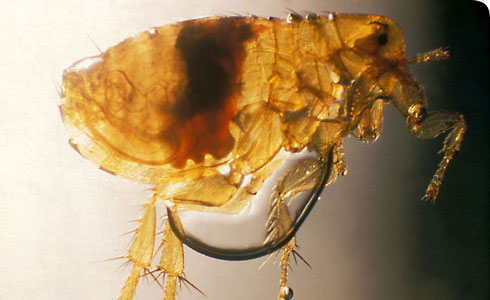Biology
Adult male and female fleas feed on the blood of their particular host species or group of host species - they are known as obligate ectoparasites.
However, without the specific host, fleas will commonly bite other warm-blooded animals.
The larvae (also known as grubs and maggots) are not usually parasitic, but are scavengers feeding on organic matter that they find in the nest or dwelling place of the host.
A female flea can produce about 25 eggs a day for at least 3–4 weeks.
Most eggs are laid in the host animal's nest or regular sleeping place. They are about half a millimetre in length, white and difficult to see with the naked eye unless they are laid on a contrasting surface.
To maximise its chances of survival, the adult flea can lie dormant for up to a year until it senses vibration, carbon dioxide and warmth, which indicate the presence of the host.
This means a large number of fleas can suddenly attack the first person or animal to enter a dwelling or nest that has been uninhabited for a long time.
The life expectancy of a flea varies. It is usually 2–3 months, but may be up to 1.5 years, depending on factors including suitable temperature, food supply and humidity.
Most animals carry a few fleas with them at all times. It is only when this number dramatically increases that the fleas can become a biting nuisance to both animals and humans.
Toolbox
Glossary
Palps
Elongated appendage near mouth used for feeling, eating and movement.
Prehensile
Adapted for grasping.
Tarsi
A section of the leg, usually segmented.
